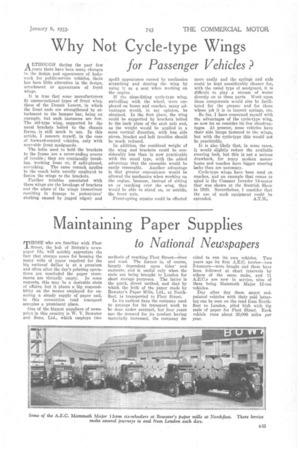Maintaining Paper Supplies
Page 57

If you've noticed an error in this article please click here to report it so we can fix it.
to National Newspapers TOSE who are familiar with Fleet Street, the hub of Britain's newspaper life, will quickly appreciate the fact that storage space for housing the many rolls of paper required for the big national dailies is at a premium and often after the day's printing operations are concluded the paper starerooms are virtually empty. In some respects, this may be a desirable state of affairs, but it places a big responsibility on the means employed for ensuring a steady supply of paper and, in this connection road transport occupies a prominent place.
One of the biggest suppliers of newsprint in this country is W. V. Bowater and Sons, Ltd., which employs two methods of reaching Fleet Street—river and road. The former is, of course, largely dependent upon tides and currents, and is useful only when the reels are being brought to London for short storage purposes. The latter is the quick, direct method, and that by which the bulk of the paper made by Bowater's Paper Mills, Ltd., at Northfleet, is transported to Fleet Street.
Iu its earliest days the company used to arrange for its transport work to be done under contract, but four years ago the demand for its product having materially increased, the company de
cided to run its own vehicles. Two years ago its first A.E.C. lorries—two 5-tonners—were bought and the have been followed at short intervals by others of the same make, and 11 A.E.C.8 are now in service, nine of them being Mammoth Major 12-ton vehicles.
Day after day these smart redpainted vehicles with their gold lettering can be seen on the road from Northfleet to London, piled high with big reels of paper for Fleet Street. Each vehicle runs about 20,000 miles per year.




























































































